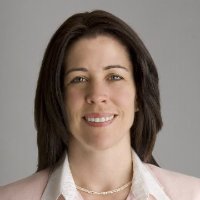
Before coming to Aragon, some teachers had other occupations, some of which are closely related to teaching, and others of which are not.
For example, Geometry teacher Robert Flores was a corporate trainer, showing the ropes to the new hires at his workplace.
“I was training adults, so there was a different mindset from high school students, but it’s actually not tremendously different,” Flores said. “I learned that a lot of instruction is [that] you have to be entertaining and engaging. So I brought that over into my teaching style.”
“I was training adults, so there was a different mindset from high school students”
Physical education teacher John Abrams previously coached several sports. He also worked as a substitute teacher for a while, ultimately bringing these two jobs together, becoming a full-fledged PE teacher at Aragon.

“I wanted to inspire kids so I substitute-taught all the subjects and going through that experience [helped me] discover that [teaching] physical education was what fit my personality best,” Abrams said.
Before and during her time as a teacher at Aragon, AP computer science and finite math teacher Lisa Kossiver was a college adviser, helping students apply for colleges and guiding them throughout their college years. Kossiver finds that, even though the two jobs are similar, they have key differences.

“Here, I have 168 [students],” Kossiver said. “[As a college adviser], I only have anywhere between four to 12 … to work with for the rest of their college life, so you meet them and the minimum you know them is five years.”
Other teachers had jobs unrelated to teaching and later found their paths to education.
In the middle of her teaching career, English teacher Holly Estrada was a realtor for four years. Estrada, however, eventually came back to teaching full time.

“In that cutthroat business, it was just really disillusioning because people would let you work really hard for them, and then just turn on you or mistreat you,” Estrada said. “You would end up not getting any pay for all the hours that you’ve invested in. It was making me jaded. So I came back to [teaching] because it makes me feel better about humanity.”
“I came back to [teaching] because it makes me feel better about humanity”
U.S. history teacher Michael Gibbons, who used to be a professional cook, describes why he went into teaching.
“I wanted to have a different effect on the world,” Gibbons said. “I was tired of being the person who complained about how the world was and not do anything about it.”
AP environmental science teacher Greg Moretti describes how teaching marine biology in Southeast Asia inspired him.
“When I was working out in the Mariana Islands, I was asked to teach a class at the local junior college, and that got me back into the classroom after having not taught for a long time,” Moretti said. “And I really realized that I missed teaching in the classroom.”
“I realized that I missed teaching in the classroom”
Moretti’s job as a teacher allowed him to explore his interest in the environment.
“I took oceanography and marine biology in a field course where we got to go out in the ocean and catch sea turtles for research purposes,” Moretti said. “And that really sparked my interest in learning more about our oceans and protecting them.”
While many teachers had unique careers, each of their varied paths led them to work at Aragon today.




